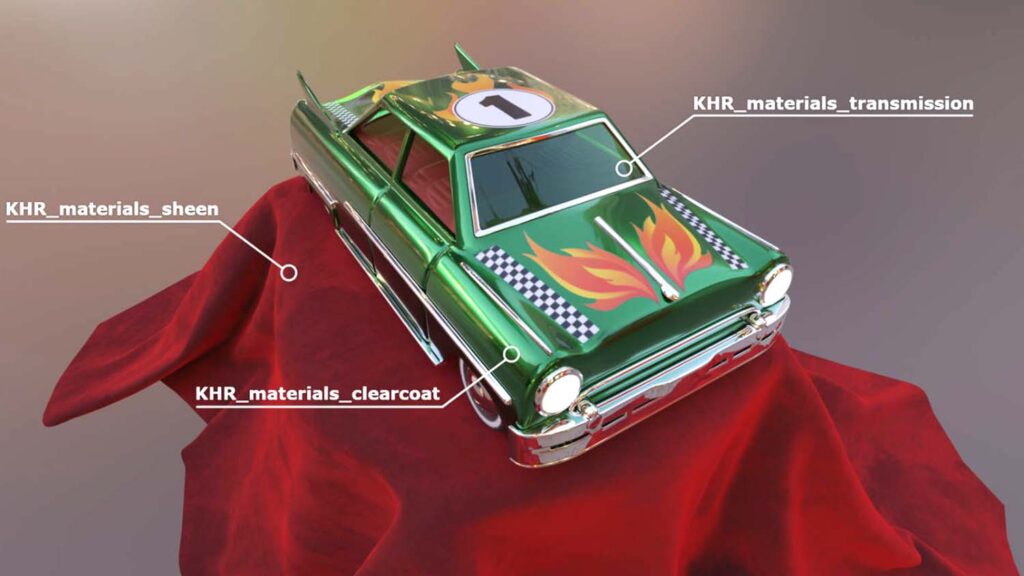The glTF ecosystem has added new Physically Based Rendering (PBR) extensions for Clear Coat, Transmission and Sheen, as the Khronos Group continues to build the ‘JPEG of 3D’.
Khronos Group, an open consortium of industry-leading companies, is creating advanced interoperability standards royalty-free format for widespread, efficient transmission and loading of 3D scenes and models.
The new PBR abilities look to enable developers and designers to achieve photorealism through rendering parameters that correspond to real-world physical properties of materials in 3D assets.
These new extensions build on the existing PBR capabilities of glTF 2.0, and together with additional upcoming extensions, are creating a powerful, interoperable, physically-based material model for the glTF ecosystem.
Existing core glTF 2.0 PBR materials define parameters for Base Color, Metalness, Roughness, Emission, Normal Map, and Baked Ambient Occlusion.
This enables a PBR model to be created for high-quality, visually realistic 3D assets that are portable to any rendering API and viewer, while being scalable to suit the capabilities of diverse platforms including mobile devices.
By defining rendering parameters based on physical properties, instead of using model-supplied shader code, viewing engines and applications are able to implement and optimize their own rendering shaders while preserving visual consistency.
The KHR_materials_clearcoat extension adds a layer of shine and polish. It is a critical graphical element for the automotive industry, for example, to showcase realistic paint finishes without breaking the laws of energy conservation which can create an unnatural shine.
The KHR_materials_transmission extension models light passing through a material, preserving specular reflections that would be visible on a shiny transmissive surface to provide a physically-correct approximation of materials such as glass, stained glass, water, and clear or partially colored plastic.
The KHR_materials_sheen extension provides sheen roughness and sheen color channels to simulate the effect light has when it hits microfibers in cloth. This is key for users working on apparel, furniture, or other items made of cloth or fuzzy materials.
Leading rendering engines such as Microsoft’s Babylon.js, Google’s Filament, and three.js already support some or all of the new PBR extensions, together with applications including Adobe’s Dimension (prerelease channel), Blender, UX3D’s Gestaltor, and AGI’s Systems Tool Kit (STK).
“This latest set of glTF extensions will raise the bar for virtual product quality online and in turn benefit the entire retail industry,” said Shrenik Sadalgi, chair of the 3D Commerce Working Group & director of R&D at Wayfair.
“We are proud to be actively contributing toward this effort by driving the requirements and development of the extensions and standards, while serving our customers the most realistic and accurate representation of products to virtually view in their space.”
Dassault Systèmes 3DExcite CEO Tom Acland, added: “Realistic representation of products and the environment is a critical contribution for the experience economy.
“The new PBR extensions add precision and emotion to virtual representations of the real world, driving deeper engagement with people everywhere.”






